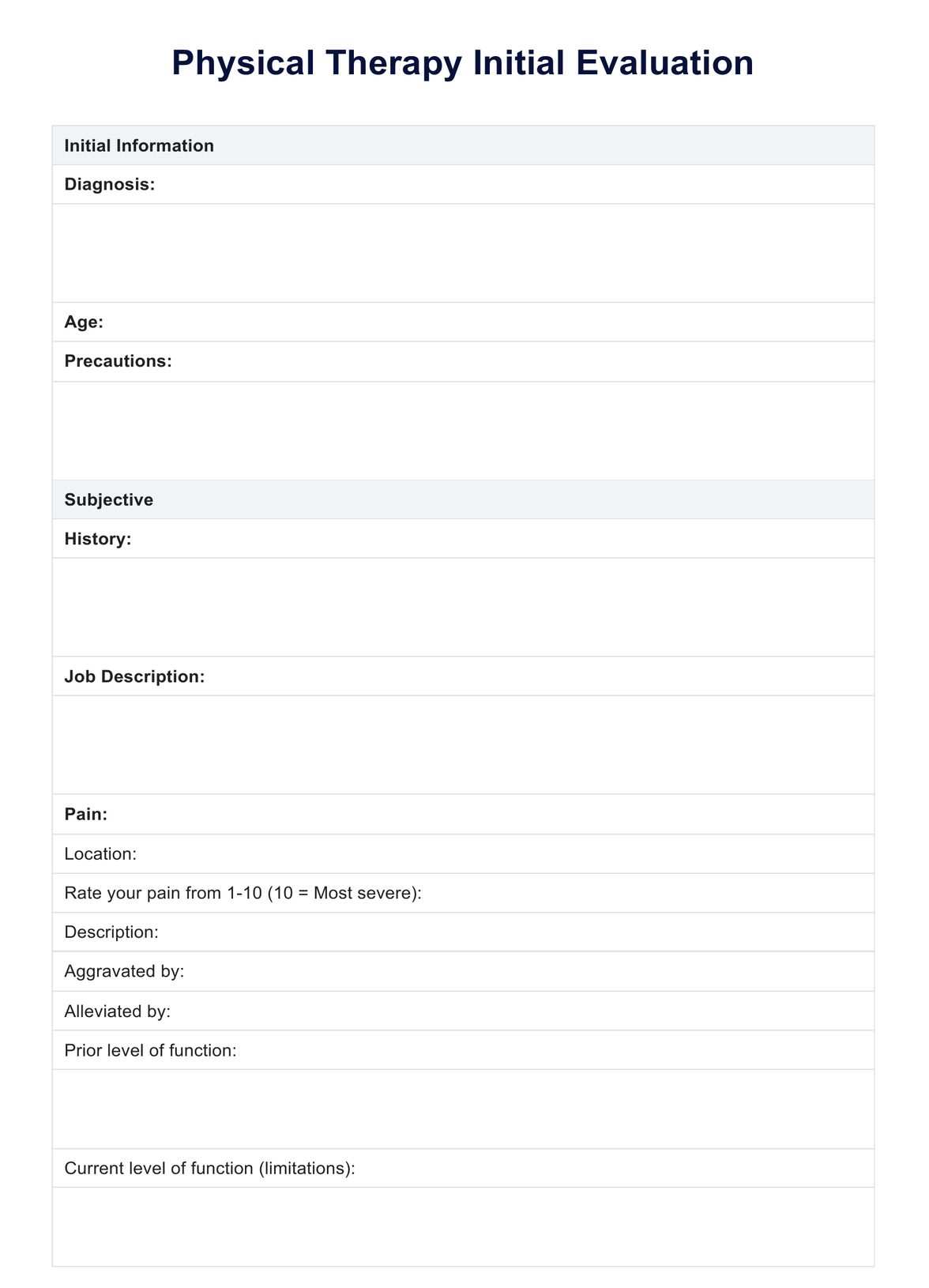A PT examination involves a patient's physical testing and assessment to understand their condition. At the same time, an evaluation analyzes the physical examination and findings to diagnose and devise a treatment plan.

Physical Therapy Initial Evaluation
Unlock the benefits of Physical Therapy Initial Evaluation: a key step in personalized treatment planning for improved mobility and pain relief.
Use Template
Physical Therapy Initial Evaluation Template
Commonly asked questions
An initial evaluation in physical therapy is the first comprehensive assessment of a patient, including reviewing medical history, conducting physical tests, and setting goals to inform the treatment plan.
Assessment systematically collects information about a patient's condition through tests and observations. Evaluation is interpreting assessment data to make clinical patient care decisions.
EHR and practice management software
Get started for free
*No credit card required
Free
$0/usd
Unlimited clients
Telehealth
1GB of storage
Client portal text
Automated billing and online payments











